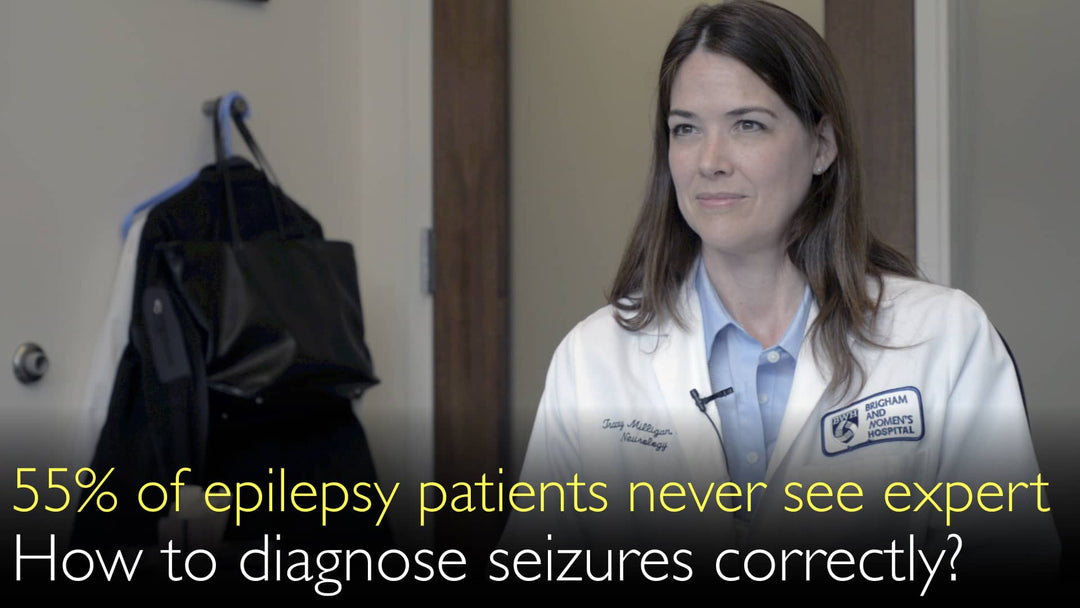혈관 영상 분야의 선도적 전문가인 Kent Yucel 박사(MD)가 심부정맥혈전증(DVT)과 폐색전증의 진단 방법을 설명합니다. 다리의 혈전 발견에는 초음파 검사가 주로 사용되며, 폐의 혈전 진단에는 정맥 조영 CT가 표준으로 활용됩니다. Yucel 박사는 특정 환자 증상과 CT, MRI 같은 고급 영상 검사가 필요한 상황을 상세히 논의합니다.
심부정맥혈전증과 폐색전증 진단: 최적의 영상 검사법
목차 바로가기
심부정맥혈전증(DVT)의 일차 검사로서의 초음파
초음파는 다리의 심부정맥혈전증(deep vein thrombosis, DVT)을 진단하는 가장 효과적인 1차 검사법입니다. 저명한 영상의학과 전문의인 Kent Yucel 박사는 다리 증상을 보이는 환자에게 초음파가 즉시 시행되는 최적의 검사라고 설명합니다. 이 비침습적 영상 기법은 다리 심부정맥의 혈전 검출에 매우 높은 민감도를 보입니다.
Kent Yucel 박사는 CT나 MRI도 사용될 수 있지만, 작은 다리 혈전 확인에는 초음파보다 효과적이지 않다고 지적합니다. 이러한 작은 혈전은 떨어져 나가 폐색전증과 같은 심각한 합병증을 유발할 수 있어 중요합니다. Anton Titov 박사와의 인터뷰에서 초음파가 초기 DVT 진단 과정의 핵심 역할을 한다는 점이 강조됩니다.
CT나 MRI가 초음파보다 우수한 경우
CT나 MRI는 특정 환자 군에서 DVT 진단을 위해 선호되는 영상 검사법입니다. Kent Yucel 박사는 초음파가 중요한 한계를 지닌다고 설명합니다: 골반 정맥을 명확히 시각화하지 못한다는 점입니다. 따라서 골반에서 기원한 혈전이 의심되는 환자에게는 고급 영상 검사가 필요합니다.
자궁암 수술과 같은 골반 수술을 받은 환자나 골반 종양이 있는 환자는 이러한 깊은 정맥의 혈전 위험이 높습니다. Kent Yucel 박사는 이 경우 초음파가 원인을 밝히지 못한 채 폐색의 간접적 징후만 보여줄 수 있으므로, 명확한 진단을 위해 CT나 MRI가 필요하다고 말합니다.
CT를 이용한 폐색전증 진단
정맥 조영제를 이용한 CT 촬영은 폐색전증(pulmonary embolism, PE) 진단의 확정적 검사입니다. Kent Yucel 박사는 호흡곤란과 같은 폐 증상을 보이는 환자에게 CT가 진단의 금표준(gold standard)이라고 강조합니다. 이 방법은 종종 CT 폐동맥조영술이라고 불리며, 폐 혈관의 상세한 이미지를 제공합니다.
Yucel 박사는 초음파나 MRI가 폐색전증 평가에 적합한 대안이 아니라고 명확히 합니다. 초음파는 폐의 공기를 투과하지 못하며, MRI 기술은 이 특정 적용에 아직 충분히 발전되지 않았습니다. Anton Titov 박사와의 대화에서는 CT 촬영 중 잘 타이밍된 정맥 조영제 주입이 정확한 PE 진단에 중요함을 강조합니다.
환자의 임상 양상과 증상
심부정맥혈전증 환자는 일반적으로 두 가지 뚜렷한 방식 중 하나로 내원하며, 이에 따라 진단 접근법이 달라집니다. Kent Yucel 박사는 환자가 혈전 자체로 인한 다리 증상이나, 혈전이 이동하여 유발한 폐색전증으로 인한 폐 증상을 보일 수 있다고 설명합니다.
다리 증상은 해당 사지의 통증, 부종, 발적, 열감 등을 포함합니다. 폐색전증으로 인한 폐 증상은 더 급성이며 갑작스런 호흡곤란, 흉통, 객혈 등을 동반할 수 있습니다. Yucel 박사는 폐색전증이 최대 30%의 사례에서 치명적일 수 있어 신속하고 정확한 진단이 중요함을 강조합니다.
의학적 제2의견의 중요성
의학적 제2의견을 구하는 것은 심부정맥혈전증이나 폐색전증 진단 후 중요한 단계입니다. Kent Yucel 박사와 Anton Titov 박사는 제2의견이 초기 진단의 정확성과 완전성을 확인하는 방법이라고 논의합니다. 이는 초음파가 무릎 아래 작은 혈전을 놓쳐 위음성(false negative) 결과를 낼 수 있다는 점에서 특히 중요합니다.
두 번째 검토는 선택된 치료 전략이 개별 환자에게 가장 효과적임을 보장합니다. 발견하기 어려운 골반 혈전을 포함한 모든 진단 가능성이 철저히 평가되었음을 확인해 줌으로써 확신과 안정감을 제공합니다.
전체 대본
Anton Titov 박사: DVT는 어떻게 진단됩니까? 다리의 혈전은 어떻게 찾나요? CT나 MRI가 정맥의 혈전을 찾기 위해 초음파보다 나은 경우는 언제인가요?
혈관 영상에 특별한 관심을 가진 저명한 CT 및 MRI 영상의학과 전문의가 다리와 심부정맥혈전증의 혈전을 진단하는 최적의 방법에 대해 논의합니다.
Anton Titov 박사: DVT는 어떻게 진단됩니까? 다리의 혈전은 어떻게 찾나요? 폐색전증은 어떻게 진단됩니까?
Kent Yucel 박사: 초음파는 심부정맥혈전증을 진단하는 첫 번째 검사입니다. 정맥 조영제를 이용한 CT 촬영은 폐색전증 진단에 사용됩니다.
심부정맥혈전증 검사와 진단은 다리 초음파로 시작합니다. DVT 초음파는 무릎 아래 작은 혈전이 놓칠 수 있어 위음성일 수 있습니다.
폐색전증 진단을 확립하려면 잘 타이밍된 정맥 조영제 주입과 함께 나선형 CT 촬영이 필요합니다. 다리에서 혈전이 발견될 때 의학적 제2의견은 진단이 정확하고 완전함을 보장합니다.
의학적 제2의견은 또한 심부정맥혈전증과 폐색전증에 대한 최적의 치료 전략 선택을 돕습니다. 심부정맥혈전증에 대한 의학적 제2의견을 구하고 치료가 최선임을 확신하세요.
Anton Titov 박사: 다리의 혈전은 어떻게 찾나요?
Kent Yucel 박사: 폐동맥 색전증은 최대 30%의 환자에서 치명적일 수 있습니다. 네, 그리고 가장 흔한 원인은 심부정맥혈전증입니다. DVT는 다리 심부정맥에 혈전이 존재하는 것입니다.
Anton Titov 박사: 귀하는 말초 혈관의 영상 연구에 대한 여러 중요한 논문, 포함하여 다리 정맥의 다중 양식 평가에 대한 논문을 발표하셨습니다. 다리 정맥의 혈전, DVT 심부정맥혈전증이 의심되거나 알려진 문제를 가진 사람이 상황을 평가하고 폐동맥 색전증 사건을 예방하도록 할 수 있는 접근법은 무엇인가요?
Kent Yucel 박사: DVT 환자는 두 가지 방식 중 하나로 내원할 것입니다. 그들은 다리의 혈전으로 인한 다리 증상으로 내원하거나, 이미 폐로 간 다리 혈전으로 인한 호흡곤란이나 객혈과 같은 폐 증상으로 내원할 수 있습니다. 그것은 그들이 어떻게 내원하느냐에 따라 다른 접근법입니다.
다리 정맥 증상으로 내원하는 사람들은 즉시 다리 초음파를 받습니다. 초음파는 다리 정맥에 대한 선택 검사입니다. CT나 MRI가 도움이 될 수 있지만, 나중에 더 큰 문제를 일으킬 수 있는 작은 혈전을 찾는 데는 초음파만큼 좋지 않습니다. 그래서 다리 초음파가 방법입니다.
그에 대한 유일한 예외는 골반 질환이나 골반 수술을 받은 환자들로, 다리가 아닌 골반 정맥에 혈전이 발생할 수 있는데, 초음파가 골반 정맥을 잘 보지 못하기 때문입니다. 때로는 초음파가 골반에 문제가 있을 수도 있다는 힌트를 보여주거나, 환자가 종양이나 수술과 같은 골반의 알려진 상태를 가져 의사가 그것을 걱정하게 할 수 있습니다.
골반 정맥에 혈전이 있는 해당 환자들에게는 CT나 MRI가 초음파보다 선호됩니다. 해당 환자들은 매우 특별한 군입니다. 다리 혈전에는 초음파가 방법입니다.
폐로 가서 폐 증상을 유발하는 혈전을 진단하기 위해 CT는 다양한 이유로 선택 진단 검사입니다. 폐동맥의 MRI는 폐색전증 평가에 충분히 좋지 않으며, 초음파는 폐 공기를 투과하여 볼 수 없습니다. 그래서 CT는 폐색전증 평가를 위한 선택 검사입니다.
Anton Titov 박사: 골반 질환의 예를 들어, 누군가 자궁암이나 복부 골반 영역의 다른 종양에 대한 수술을 받았다면, 잠재적으로 골반 혈관계에 혈전을 발생시킬 수 있는 질환 유형이 될 것입니다.
Kent Yucel 박사: 정확합니다. 다리 초음파는 종종 골반 정맥에 폐색이 있다는 간접적 징후를 보여줄 수 있지만, 문제의 원인을 결정하는 데 도움이 되지 않을 수 있습니다. 수술, 종양, 또는 골반 정맥의 혈전으로 인한 출혈은 폐색을 유발할 수 있으며, 초음파는 그것들을 구별할 수 없습니다. 이때 CT와 MRI가 가장 도움이 됩니다.








